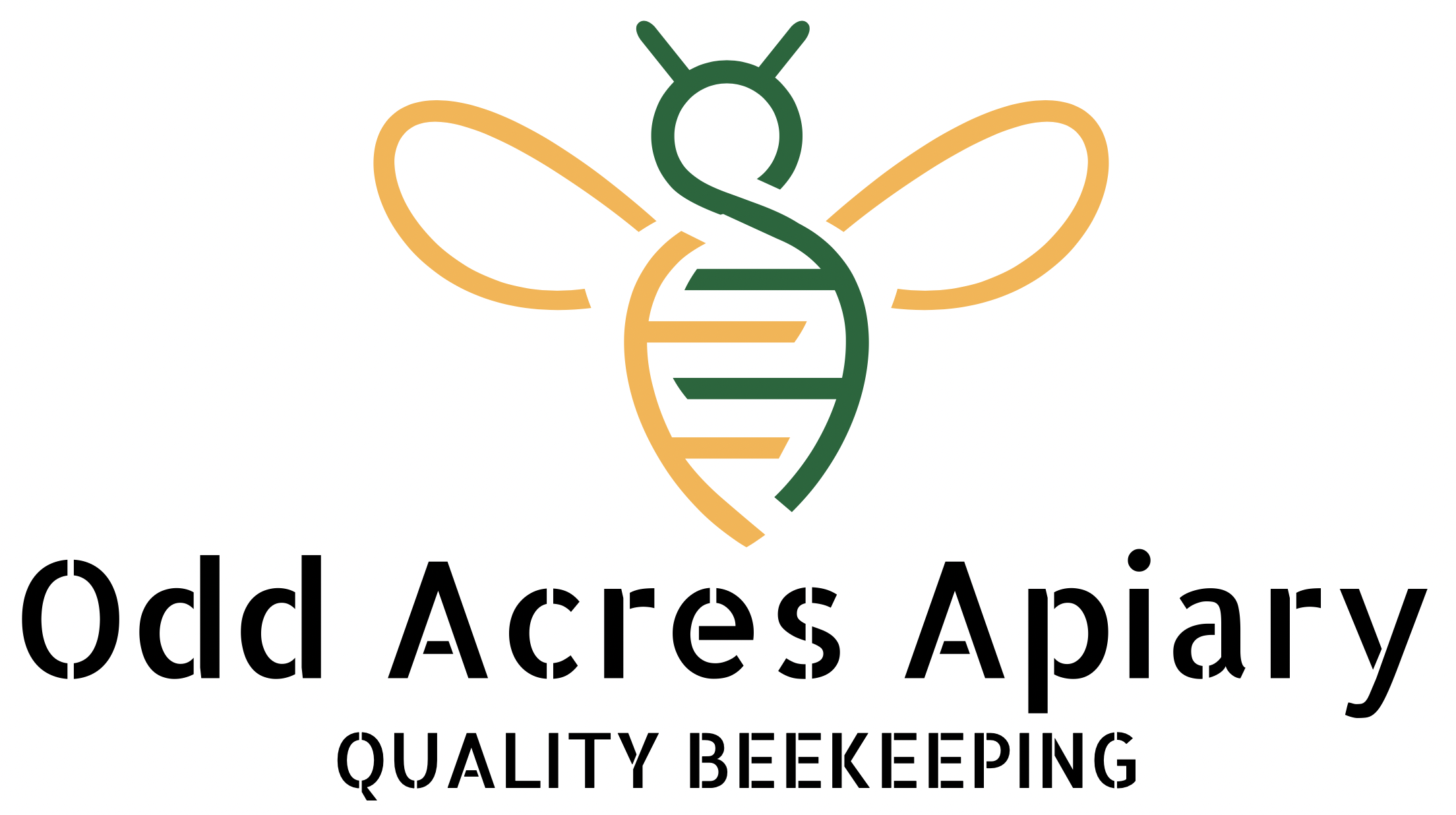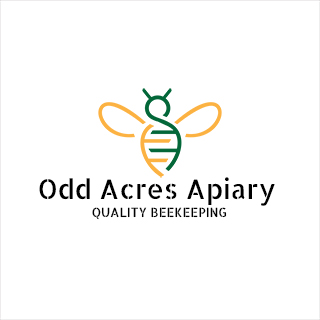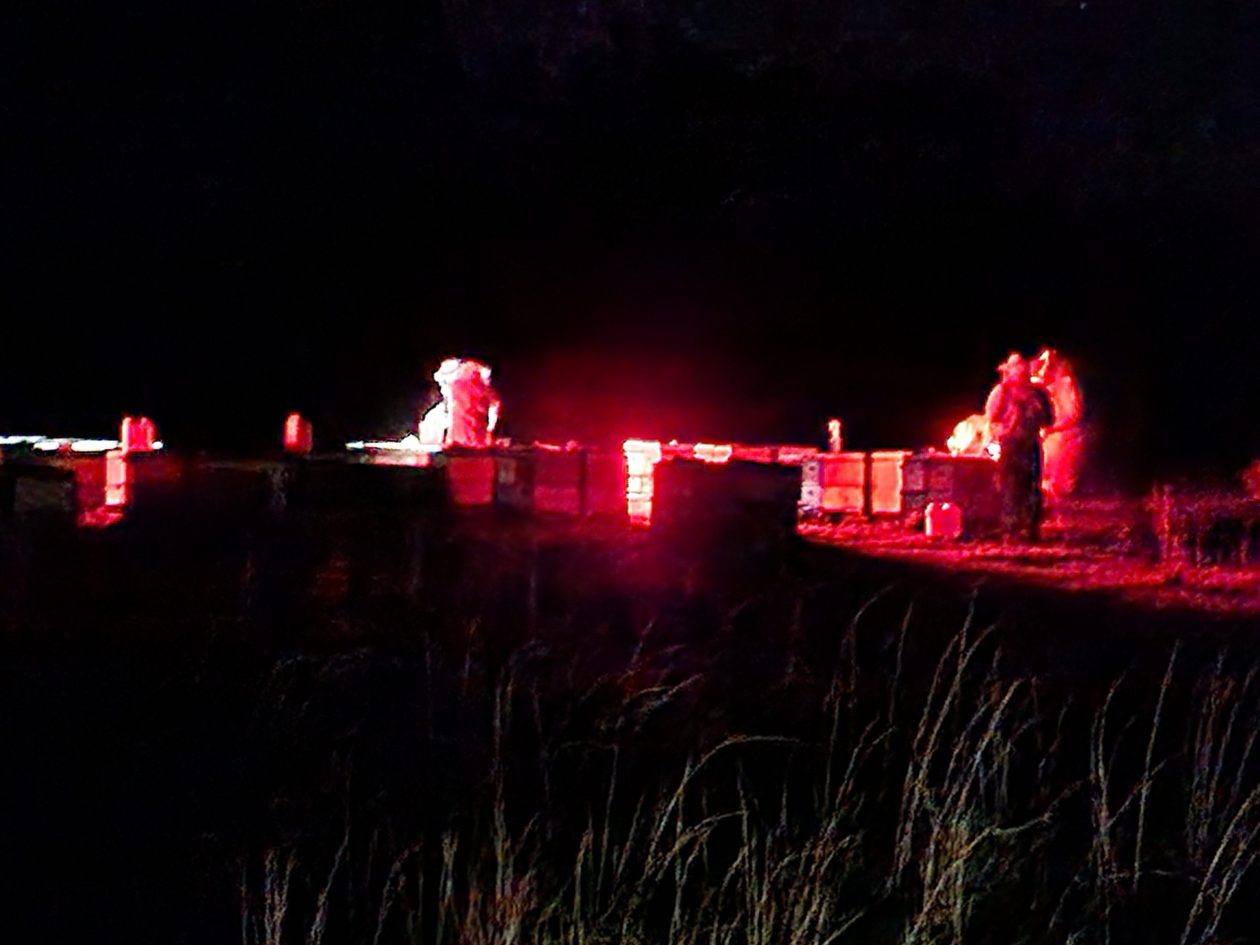
Annus horribilis
Varroa mite has been detected on Australian shores. This is the news no recreational or commercial beekeeper wants to hear.
This month, I spent a week in the Newcastle area participating in the NSW Varroa Response as a volunteer beekeeper. This article is an opinion piece accompanied by a collection of notes and thoughts gained from doing the work and speaking with a wide range of individuals at Tocal – the response headquarters near Paterson in NSW.
As you may surmise from the primary photograph above, nearly all my work was at night.
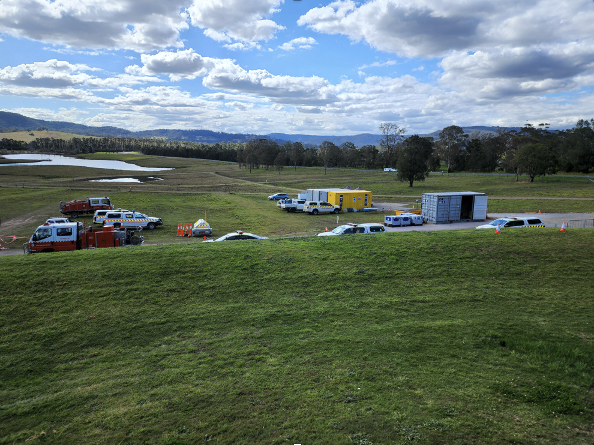
I arrived on Monday, 15th August. By the time I left the following Monday, I had destroyed somewhere in the order of 200 bee hives. The process was quite simple and usually followed these steps:
- A team briefing was held by a NSW Department of Primary Industries (DPI) officer, known within the operation as an Authorised Officer (AO). The AOs I met were compliance officers from Fisheries and Shooting/Hunting. The teams I participated in consisted of a couple of beekeepers assisted by 3-5 other volunteers from NSW Rural Fire Services or NSW Parks and Wildlife.
- I arrived at the site around 6 pm where the formalities and coordination occurred between the landholder and the AO. This provided access to the colonies and a briefing to the landholder regarding what was to occur and processes for compensation. On one occasion, we arrived at 3 pm to finish work from the previous night due to the size of the workload ahead of us.
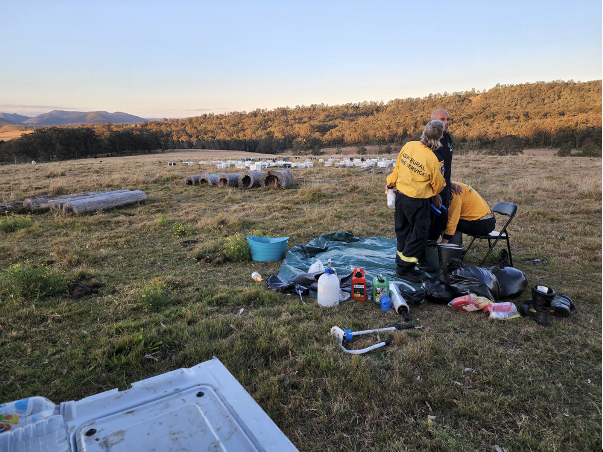
- Establishment of a strict biosecurity zone. Exit from this zone had to be via a cleaning station where all disposable equipment was “bagged”, and all reusable equipment had to be scrubbed clean and alcohol washed.
- Hive euthanasia involved pouring 200mL to 400mL of petrol, depending on the size of the hive, sealing the hive in black plastic and taping it so that it was bee-proof. These hives would later be removed by another team. The amount of time to euthanise hives was highly variable because of the many configurations of hives and pallets and how they were spaced out. I was fortunate most of the hives I worked through were on pallets and concentrated in one area. We could process about 20-30 beehives, wrapping and preparing the hives in a couple of hours.
- When the work was completed, all equipment was cleaned and sanitised. The disposable gear was bagged for secure disposal. The site was cleaned and cleared before the required departure of 10 pm.
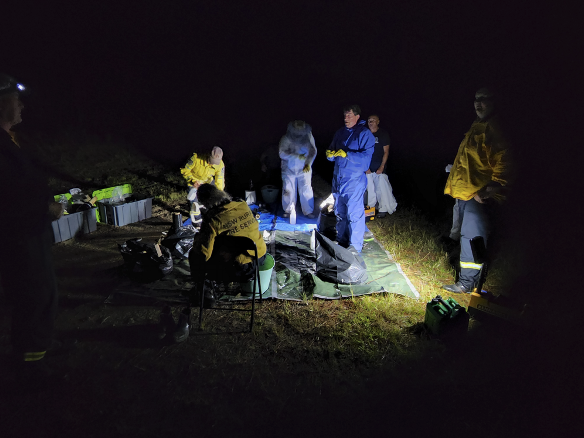
For me, the most beneficial aspect of volunteering – apart from simply doing my bit – was the opportunity to meet various beekeepers and other volunteers to hear their views regarding the emergency. The following are my thoughts on why the eradication process has been conducted the way it has and what we might expect over the next 6-12 months.
….About the Response:
- From what I have been told, the current response plan is based on an exercise conducted by NSW DPI in Orange in 2018. Much of the current planning and conduct of the Response has been based on the outcome of that exercise – the National Response Plan. So, contrary to some views – particularly on social media- a plan was being followed.
- How could the mites have been found in such large numbers yet not realised until the Sentinel Hive detection mid-year? NSW DPI received 124 negative sugar shake reports during the Autumn 2022 campaign, yet a couple of thousand beekeepers are around the Newcastle area. Simply put, not enough of us were doing mite checks, including unregistered beekeepers, who were unaware of the requirement or how to conduct the test correctly.
….About the mite:
- Varroa genome is about 13,000 times the size of Covid-19. It has simply taken longer to decode and understand the genetics. However, we can say that the samples tested were quite similar and all indicative of the one event of entry into Australia.
- None of the tested mites had the common genetic mutations expected of resistance to Amitraz or other chemical miticides.
- A study is still underway to determine the actual source of the mite, but if it has no genetic mutation to pesticides, it must have come from somewhere that doesn’t use pesticides.
….The date and epicentre of the infestation:
- Epidemiological analysis and the natural spread models used by NSW DPI suggest that the incursion occurred some 12 months ago at the time of writing this post.
- It is generally accepted that the epicentre of the infestation is the NSW areas around Williamstown, including Raymond Terrace, Salt Ash and Tomago.
…..Current views on inspection versus eradication:
- On the day I arrived, a significant shift in priorities was underway. A halt was made to any new hive Varroa surveillance inspections. Approximately 25,000 hives had been inspected when I arrived, and all efforts had transferred to hive eradication. The primary driver for this was eradicating managed hives before the widespread baiting of feral bee colonies.
- You may have noticed that the counter for new infected premises has not increased from 99 for the last couple of weeks. This is because of the shift in focus I mentioned above.
- There are currently about 600 identified feral colonies reported. Euthanasia of feral hives has commenced, but only on a direct basis – not through baiting. Because of their location, which is usually within structures or in public places, specialised and trained pest inspectors and beekeepers are required – and they are in short supply.
…..On the feral bee problem:
- The National Response Plan understands the importance of the destruction of unmanaged colonies. As mentioned, widespread baiting and euthanising of feral colonies cannot occur until managed hives are removed. This is a daily talking point among Varroa Response stakeholders.
- Details of the approach to feral colony eradication are still being finalised. For example, the deployment of fipronil and attended baiting stations.
- Air-deployed baiting stations are very much on the agenda at this stage.
- So far, no feral colonies that have been inspected have had a positive Varroa mites detection result.
…..What about Narrabri and Nana Glen (Coffs Harbour, NSW):
- One hundred forty-three hives were moved to Narrabri from Newcastle in May 2022. One mite was detected after alcohol washes of all 143 hives. All hives were euthanised. I think we can consider Narrabri clear.
- Thirty hives were moved to Nana Glen from Newcastle in April 2022. Of the 30 hives, three mites were found from alcohol washes. All 30 hives were euthanised, and intensive surveillance since July has not detected any mites so far.
……Have any mites been detected during the East Coast Almond pollination season? No.
So, based on the above, I would expect the following over the next 6-12 months:
- My impression was that NSW DPI was preparing for the introduction of a “living with varroa” management strategy if mites had been detected during the almond pollination event. But no mites have been detected, so that eradication will remain the focus.
- The feral colony situation remains a genuine concern. Swarming has already commenced in the Newcastle area, and the mite’s escape into the feral population lends greater urgency to the feral baiting program. Yet last-minute requirements from the NSW Environmental Protection Agency and various lobby groups are likely to delay the use of fipronil-dosed baiting stations.
- If fipronil is not used to bait and kill feral colonies, the chances of eradicating Varroa are greatly diminished.
- Confidence among NSW DPI and Australian Honey Bee Industry Council (AHBIC) stakeholders that Varroa has been contained to the Newcastle area is very high. I agree with this assessment, subject to my views on fipronil.
- The move to a protracted surveillance phase has commenced, noting the job advertisements by NSW DPI for Varroa surveillance officers. The lengthy surveillance phase is planned to last two years.
- There is a very high likelihood of further Varroa detections around Newcastle in the coming months, particularly in feral colonies. Expect a “Whack-a-mole” like effort where mites will be detected, eradication of colonies within 10 km, and further surveillance will be undertaken in the adjoining surveillance areas. This might become the “new normal” for the next couple of years.
- There are plans to relax some of the restrictions for “blue” areas in NSW over the next 2-3 weeks for commercial beekeepers using a “risk-based” approach. I don’t know if this will change the current arrangements between NSW and the ACT or arrangements for amateur beekeepers. I expect this will accompany a very determined, perhaps mandatory education and training effort for mite-related testing and reporting from all beekeepers.
